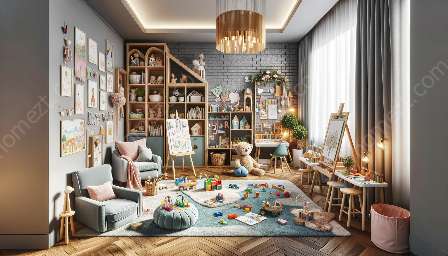Puppet shows have captivated audiences for centuries, offering a unique form of storytelling and entertainment. From hand puppets to marionettes, these performances have a special place in the hearts of children and adults alike.
When it comes to playroom activities, puppet shows provide a wonderful opportunity for kids to engage in imaginative play, express themselves creatively, and develop important social and emotional skills. Let's delve into the captivating world of puppetry and explore its compatibility with nursery and playroom settings.
The History of Puppet Shows
Puppetry is an ancient art form that has been prevalent in various cultures around the world. Its origins can be traced back thousands of years, with early forms of puppets being used in rituals, ceremonies, and theatrical performances. Throughout history, puppet shows have evolved, incorporating different styles, techniques, and narratives that continue to enchant and inspire audiences.
Benefits of Puppet Shows for Children
Introducing puppet shows into the nursery and playroom can yield a multitude of developmental benefits for children:
- Enhanced Communication Skills: Through puppet play, children have the opportunity to express themselves, develop language skills, and improve their communication abilities.
- Emotional Expression: Puppets provide a safe outlet for children to explore and express their emotions, fostering empathy and understanding.
- Imagination and Creativity: Engaging with puppets encourages imaginative thinking, creative storytelling, and the development of problem-solving skills.
- Social Interaction: Puppet shows can facilitate interaction and collaboration among children, promoting teamwork and social skills.
- Learning about Narratives: Watching and participating in puppet shows can enhance children's understanding of plot, character development, and storytelling techniques.
Integrating Puppetry into the Nursery and Playroom
Incorporating puppetry into the nursery and playroom environment can be an enriching and delightful experience for children. Here are some creative ways to integrate puppet shows into playroom activities:
Puppet Making:
Encourage children to create their own puppets using basic craft materials. This hands-on activity promotes artistic expression and allows kids to bring their imaginative characters to life.
Storytelling Sessions:
Organize puppet storytelling sessions where children can use puppets to act out their favorite stories or create their own narratives. This not only enhances storytelling skills but also encourages active participation and engagement.
Themed Puppet Performances:
Create themed puppet shows based on popular stories, fairy tales, or educational themes. This can spark children's curiosity and enthusiasm for learning while promoting creativity and imaginative play.
Puppet Theater:
Set up a puppet theater in the playroom, complete with a stage, curtains, and seating. Children can take turns performing puppet shows, fostering confidence and public speaking skills.
The Magic of Puppet Shows in Playroom Activities
Puppet shows hold a unique allure in the realm of playroom activities, offering a blend of entertainment, education, and emotional development. By immersing children in the enchanting world of puppetry, nurseries and playrooms can become hubs of creativity, collaboration, and joyful learning.
Conclusion
As we embrace the enduring charm of puppet shows, it becomes evident that they are a perfect fit for playroom activities and nursery settings. Through puppetry, children can unlock their imagination, enhance their communication skills, and embark on unforgettable storytelling adventures. Whether through DIY puppet making or captivating puppet performances, the allure of puppet shows in the nursery and playroom is truly magical.


